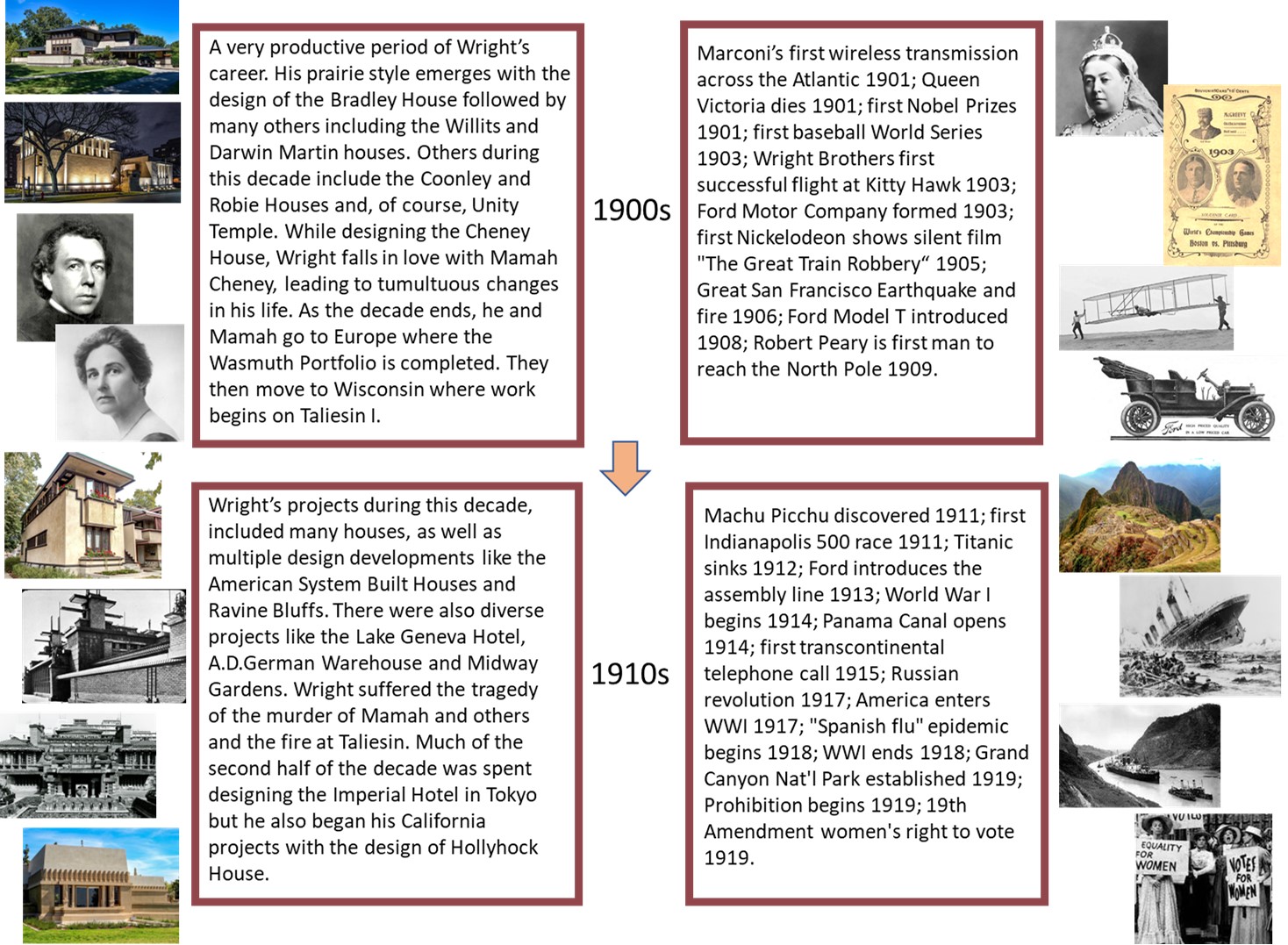 On June 9, 1905, only five days after the fire which destroyed the old Unity Church, the congregation voted unanimously to build a new edifice. The committee on the construction of the new church was chaired by Charles Roberts who was instrumental in securing for Wright the commission for Unity Temple. One might think that Unity Temple owes much of its successful completion to him but the credit should really be attributed to Edwin Ehrman. He became a new member of the Board of Trustees in March 1906 and assumed the position initially held by Roberts. In the coming months and years, it would be Ehrman who would prove crucial to the construction and completion of Unity Temple.
On June 9, 1905, only five days after the fire which destroyed the old Unity Church, the congregation voted unanimously to build a new edifice. The committee on the construction of the new church was chaired by Charles Roberts who was instrumental in securing for Wright the commission for Unity Temple. One might think that Unity Temple owes much of its successful completion to him but the credit should really be attributed to Edwin Ehrman. He became a new member of the Board of Trustees in March 1906 and assumed the position initially held by Roberts. In the coming months and years, it would be Ehrman who would prove crucial to the construction and completion of Unity Temple.
A month after Ehrman’s assuming the chair of the construction committee the drawings for Unity Temple were approved; stakes were set in the lot and ground breaking took place on Saturday, May 12, 1906. Although Wright’s design had been accepted by the Board, that design was not what was completed in October 1908. Wright’s architectural philosophy was summarized by the phrase “a work develops conceptually as it builds physically.”[1] Wright made numerous changes and alterations to the building and its design such as increasing peripheral foundation walls; enlarging the stair blocks at the four corners; redesigning the central skylight from one to a grid of twenty-five as the interior was being built; and designing a screen for the organ pipes so complex it was built according to a supplemental contract.[2]
 Throughout the tumultuous construction, it was Edwin Ehrman who was the guiding hand that eventually saw to the completion of Unity Temple. He had replaced Roberts as building committee chairman and also assumed other duties with the church. Ehrman not only had to conduct and manage the affairs of the church on a day-to-day basis, but also had to deal with the construction of a most unusual building which entailed working with Wright, the contractor Paul Mueller, and all the subcontractors on the project; taking charge and approving all quality and costs of work; approving payments to suppliers and subcontractors; serving as mediator in all conflicts and disputes; and acting as liaison with the Board, congregation and project team. All this while the budget ballooned to twice the approved amount and Wright was perhaps overextended and unavailable due to projects in Buffalo, Oak Park and with the Coonley Estate in Riverside, not to mention his involvement with Mamah Cheney.
Throughout the tumultuous construction, it was Edwin Ehrman who was the guiding hand that eventually saw to the completion of Unity Temple. He had replaced Roberts as building committee chairman and also assumed other duties with the church. Ehrman not only had to conduct and manage the affairs of the church on a day-to-day basis, but also had to deal with the construction of a most unusual building which entailed working with Wright, the contractor Paul Mueller, and all the subcontractors on the project; taking charge and approving all quality and costs of work; approving payments to suppliers and subcontractors; serving as mediator in all conflicts and disputes; and acting as liaison with the Board, congregation and project team. All this while the budget ballooned to twice the approved amount and Wright was perhaps overextended and unavailable due to projects in Buffalo, Oak Park and with the Coonley Estate in Riverside, not to mention his involvement with Mamah Cheney.
Ehrman was able to keep the congregation afloat and complete the building as Wright had designed it. The ironic thing is that many years later his daughter said that he really didn’t like the building but he was the consummate professional and did his job. His house still stands on Kenilworth just south of Chicago Avenue, a short walk from Wright’s Home & Studio. Next time you pass it be thankful that Ehrman was the right man at the right time and place to ensure a masterpiece was built.
Mark Scott is a lifelong resident of Oak Park and River Forest and a researcher and interpreter for Wright’s Home & Studio and Unity Temple.
[1] Joseph M. Siry, Unity Temple: Frank Lloyd Wright and Architecture for Liberal Religion, (Cambridge University Press, New York, 1996), p. 137.
[2] Siry, p. 182.





